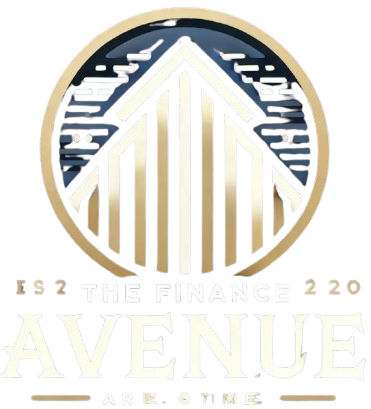How Inflation and Unemployment Are Related
Category
Categories

Understanding the Connection Between Inflation and Unemployment
The correlation between inflation and unemployment has traditionally been seen as inverse. However, this connection is more complex than it seems and has not always held true over the past few decades.
The Significance of Inflation and Unemployment
As inflation and employment are critical economic indicators, it is essential to explore their relationship and impact on the broader economy.
Key Points to Remember
Labor Supply and Demand
When unemployment levels are high, there is an imbalance where the number of individuals seeking employment surpasses the available job opportunities. This situation results in an excess supply of labor compared to the demand for it in the workforce.
To illustrate, wage inflation, which signifies the change in wages over time, can be used as an indicator of inflation within an economy. In times of elevated unemployment, companies have less incentive to increase wages due to the surplus of potential workers. Consequently, wages tend to remain stagnant during high unemployment periods, resulting in minimal to no wage inflation.
Effects of Low Unemployment on Wage Inflation
During periods of low unemployment, employers face a situation where the demand for labor surpasses the available supply. Consequently, in a tight labor market, employers are compelled to offer higher wages in order to attract and retain employees. This phenomenon ultimately results in an increase in wage inflation.
Research on Unemployment, Wage Inflation, and Overall Inflation
Economists have conducted extensive studies over the years to explore the connection between unemployment rates, wage inflation, and the overall inflation rate.
The Phillips Curve
A.W. Phillips, an economist, pioneered the concept of the inverse relationship between unemployment and wage inflation. His research spanning nearly a century in the United Kingdom from 1861 to 1957 revealed that wage inflation could be determined by both the level of unemployment and its rate of change.
According to Phillips, in times of high labor demand with low unemployment rates, wages tend to increase rapidly due to competitive bidding by employers. Conversely, in periods of low labor demand with high unemployment rates, workers resist accepting lower wages, leading to a gradual decrease in wage rates.
The Finance Avenue indicates that the Federal Reserve Bank of the United States aims for an inflation rate of 2%.6
Another crucial element affecting wage rate fluctuations is the rate at which unemployment changes. In a thriving economy, employers will compete more intensely for workers, leading to a rapid increase in the demand for labor compared to situations where labor demand is stable or growing slowly.
Given that wages and salaries are significant cost components for businesses, an increase in wages typically results in higher prices for goods and services within an economy, thereby contributing to an overall rise in inflation. Consequently, rather than focusing on wage inflation, Phillips depicted the correlation between general price inflation and unemployment in what is now recognized as the Phillips curve.7
Phillips Curve Implications
The core goals of monetary policy for central banks include maintaining low inflation and full employment. The U.S. Federal Reserve, for example, aims for maximum employment, stable prices, and moderate long-term interest rates.
Economists have utilized the Phillips curve to address the tradeoff between inflation and unemployment, adjusting monetary or fiscal policy accordingly. By analyzing the Phillips curve for a specific economy, policymakers can aim for a balance between desired levels of inflation and unemployment.
The Relationship Between Consumer Price Index (CPI) and Inflation
The rate of change of the Consumer Price Index (CPI) serves as an essential indicator of inflation and rising prices within the U.S. economy.
Understanding the Trends Through Figures
Figure 1 illustrates the correlation between the rate of change of the CPI and unemployment rates during the 1960s.
Effect of Unemployment on Price Levels
When the unemployment rate was reduced from 6% to 5% with the help of monetary and fiscal stimulus, the resulting impact on inflation was minimal. In simpler terms, a 1% decrease in unemployment did not lead to significant price increases.
Contrastingly, a drop in unemployment from 6% to 4% would result in a noticeable shift in inflation rates, with the inflation rate rising from 1% to 3% as depicted on the left axis.
Visual Representation
Figure 1: U.S. inflation (CPI) and unemployment rates in the 1960s
Monetarist Response
The 1960s demonstrated strong evidence supporting the Phillips curve, suggesting that a sustained decrease in unemployment could be achieved as long as a higher level of inflation was accepted.
However, towards the end of the 1960s, a group of economists, particularly monetarists like Milton Friedman and Edmund Phelps, challenged this idea. They argued that the Phillips curve is not applicable in the long term. Instead, they believed that in the long run, the economy tends to return to its natural rate of unemployment regardless of the inflation rate.
The Concept of Natural Rate of Unemployment
The natural rate, as explained by The Finance Avenue, represents the equilibrium unemployment level once short-term cyclical influences fade away and wages reach a point of equilibrium in the labor market. When workers anticipate inflation, they push for higher wages to maintain real wages.
Impact of Policies on Unemployment
If policies are implemented to reduce unemployment below the natural rate, the ensuing surge in demand prompts companies to escalate prices at a faster pace.
4.2%
The current U.S. unemployment rate stands at 4.2% as of November 2024.
As inflation speeds up, workers might be inclined to offer their labor in the short run due to higher wages, resulting in a decrease in the unemployment rate. However, in the long term, as workers become more aware of the erosion of their purchasing power in an inflationary setting, their willingness to supply labor diminishes, leading to a rise in the unemployment rate. Nevertheless, both wage and general price inflation continue to climb.
Consequently, prolonged higher inflation does not bring advantages to the economy in terms of lower unemployment rates. Similarly, lower inflation rates should not impose a burden on the economy by causing higher unemployment rates. In the long run, since inflation does not have an impact on the unemployment rate, the long-run Phillips curve transitions into a vertical line at the natural rate of unemployment.
The Finance Avenue: Short-Run vs. Long-Run Phillips Curves
Friedman’s and Phelps’s research led to the creation of the short-run and long-run Phillips curves. The short-run Phillips curve considers expected inflation as a factor influencing current inflation rates, earning the name “expectations-augmented Phillips curve.”
The Finance Avenue: Natural Rate of Unemployment
The natural rate of unemployment is not a fixed figure and evolves over time due to various factors such as technological advancements, changes in minimum wage policies, and levels of unionization. In the United States, the natural rate of unemployment was 5.3% in 1949, gradually increasing to a peak of 6.2% in 1978–79 before declining. It is projected to be approximately 4.5% for the remainder of the 2020s.
Minimum Wage
Twenty-one U.S. states increased their minimum wage rates on January 1, 2025. These states are:
Disintegration of a Relationship
The 1970s
Initially, the monetarists’ perspective didn’t gain much attention due to the Phillips curve’s popularity in the 1970s. However, unlike the 1960s data supporting the Phillips curve, the 1970s data strongly validated the theories put forth by Friedman and Phelps121115
Over the following three decades, data points failed to clearly establish the inverse correlation between unemployment and inflation5
1970s Inflation and Unemployment in the U.S.
The 1970s marked a period of both high inflation and high unemployment in the U.S. This was primarily due to two significant oil supply shocks that occurred during this time.
The First Oil Shock in 1973
The initial oil shock took place in 1973 when Middle East energy producers imposed an embargo, causing crude oil prices to skyrocket by four times within a year.
The Second Oil Shock in 1979
In 1979, a second oil shock occurred following the overthrow of the Shah of Iran during a revolution. The subsequent loss of oil output from Iran led to a doubling of crude oil prices from 1979 to 1980. This situation resulted in a combination of high unemployment and soaring inflation rates.
The 1990s
During the 1990s, there was a significant economic boom characterized by low inflation and unemployment rates. Economists point to various factors that contributed to this favorable situation:
CPI vs. Unemployment
The Finance Avenue illustrates the relationship between the Consumer Price Index (CPI) and unemployment, showing a pattern of inverse correlation. This relationship occasionally deviates from the expected trend.
What Are the Primary Reasons for Unemployment?
Unemployment can be attributed to various factors, such as seasonal changes, economic cycles, downturns, technological progress displacing labor, and the relocation of jobs overseas.
Does Inflation Cause a Recession?
Inflation has the potential to trigger a recession. When prices rise due to inflation without a corresponding increase in wages, consumers may reduce their spending. This decrease in consumer spending can result in businesses facing financial losses, leading to layoffs, increased unemployment rates, and a reduction in overall consumer spending. This cycle can further weaken the economy, perpetuating the recession.
Who Gains from Inflation?
Typically, those in debt benefit from inflation as they repay their loans using money that has decreased in value compared to when they borrowed. Additionally, banks can profit from inflation as central banks tend to raise interest rates during high inflation to curb it, leading to increased profits for banks.
The Bottom Line
The relationship between inflation and unemployment, as depicted in the Phillips curve, shows an inverse correlation that is effective in the short term, especially when inflation remains relatively constant, as seen in the 1960s. However, this correlation does not hold true in the long term as the economy adjusts to any level of inflation and reverts to its natural rate of unemployment.
Although the connection between inflation and unemployment seems straightforward, it is more complex than it appears. This relationship has broken down during periods such as the stagflationary 1970s and the booming 1990s, highlighting its intricacies and nuances.In




